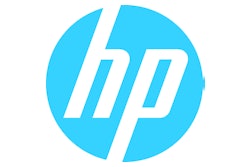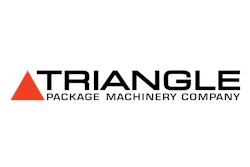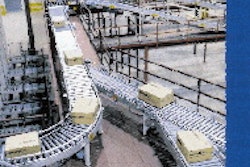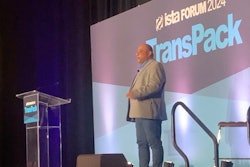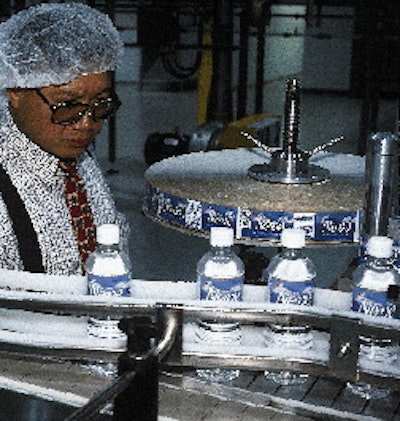
Interesting work and a clear career path are crucial to retaining packaging professionals. No less crucial is salary. After all, money is ostensibly why people work in the first place. If there's cash enough to pass around, one of the best ways to keep good packaging people is to share it.
"Somebody once said if you want to be number one in your industry, then you should pay accordingly," says Bruce Cohen, director of packaging at pharmaceutical giant Glaxo Wellcome, Inc. in Research Triangle Park, NC. "So we do pay well, and we're located in a part of the country that has a lower cost of living compared to New Jersey, New York or Chicago, for example."
A similar philosophy prevails at Hewlett-Packard in Palo Alto, CA. "Our salaries are very competitive," says Paul Russell, packaging program manager. "We use a lot of resources to investigate what other companies are doing from a salary and benefits standpoint."
Another company that's careful to keep the salaries of its packaging people current is Bass Brewers, Burton-on-Trent, England. "We regularly review [job advertisements for other companies], and if we're not paying people the right amount, we do something about it," says Bill Dando, director of package development at Bass.
Unlike a Glaxo Wellcome, Hewlett-Packard or Bass, a start-up company may take a different tack in compensating its packaging personnel. A good example is bottled water company Natural Glacial Waters, headquartered in Vancouver, British Columbia, Canada.
"As a startup, we can't be the highest-paying company," says Don Nose, human resources manager. "We don't have the big base salaries to compete with the big companies. But we have a program we think is attractive. There's a base combined with upside incentives based on performance. And at the appropriate manage<> ment levels, we provide for some stock options."
Mindful of the company's start-up status, management deliberately sought out people with an entrepreneurial temperament. "They know they are solid performers with a history of being able to deliver," says Nose. "They also know that if they do deliver, the reward will be commensurate with their abilities. While startups are risky, there is also an opportunity for greater compensation rewards than might be available in other, more stable settings.
"We put people in the best position to gain promotions and thus leverage their compensation," Nose continues. "We encourage people to attend training that will upgrade their skills and favorably position them for promotions and the compensation that goes with them."
More established companies have had to ratchet up salaries to attract top packaging people. So say managers at several companies who have been in the market recently for packaging professionals.
"In attracting the best people, I'd say we've had to be very flexible on compensation, and we've had to be flexible on the use and structure of our relocation program," says Marty O'Connor, a senior human resources manager at Kraft Foods' Tarrytown, NY, location. O'Connor recruits to fill positions in R&D and package development among others. Kraft keeps abreast of the going rate for packaging people by maintaining close ties with professional search firms. "The recruiters advise us about the marketplace, what levels of compensation will be needed to attract people. This market consulting is, quite honestly, a major way that they provide value."
Sensitive situation
However, there's an insidious downside to throwing a lot of money around to attract new packaging people-it can actually interfere with retaining employees who started at lower salaries that haven't risen as quickly as the market has.
Anheuser-Busch's Norm Nieder, director of packaging technologies, says such "market pricing indexing"-where large firms survey the compensation levels of other firms to adjust their levels accordingly-is an incomplete compensation adjustment mechanism.
"What it does is set a market rate for a given position. What it doesn't do is pay for knowledge," says Nieder. "It doesn't compensate for a person who has fifteen years of experience. This creates a tough situation in this tight labor market. Because you can bring in people with far less experience and pay them a hell of a lot more, plus a signing bonus, than people earn in parallel positions already in the department. It's a real dilemma. How do you build your future in that kind of environment?"
Kraft, too, is cognizant of the problem. "We have to recognize that if someone arrives here making sixty-five thousand dollars," says Kraft's O'Connor, "and works alongside loyal employees [doing comparable work] making fifty-five thousand, that could pose a problem for us both short- and long-term." O'Connor maintains that it's reasonable to assume that some employees will eventually find out what others are making.
"Quite honestly, that's one of the reasons why it's better and more cost-effective for us to do most of our hiring at the college level and develop our people by promoting them inside the company," he says.
Nevertheless, O'Connor says today's tight market makes it necessary to do something with compensation to attract packaging people. One of the most popular tools at Kraft is the signing bonus.
"It's something that didn't apply broadly in our business even five years ago. Now it's becoming routine, [even for] college recruiting."
Procter & Gamble, which has extremely close ties to the college community for its recruitment efforts (see Packaging World, Oct. '98, p. 105), also has seen signing bonuses increase at the college level. "What I have been told is some of the students are seeing signing bonuses in the five- to ten-thousand-dollar range," says George Vernon, who heads up packaging R&D for the consumer-products giant.
Creative compensation
A signing bonus isn't the only salary strategy companies are using. Creativity in how compensation is structured is another key element. Philadelphia-based SmithKline Beecham provides a good example. There, entry-level people may "start out at a lower grade, but there's good movement within the salary range," says Angelo Scolieri, director, packaging and production technical services.
"If they show their value in a year and half to two years," Scolieri continues, "they get promoted to the next level, which is anywhere from a seven- to ten-percent increase on top of a merit raise," of 4% to 6%.
Another strategy to retain packaging professionals through compensation is to create a high-paying technical track. "In the past, management would be the direction everyone wanted to go if they wanted to make money," says recruiter Walt Ellis, who runs PackStaff, a packaging recruiting firm in Oostburg, WI.
"Now companies are saying you can grow as a manager or grow up the technical ladder and financially you'll be compensated on an equal plane," Ellis continues. "I know of technical people who are making well over a hundred thousand dollars a year." (For an explanation of how Procter & Gamble has been successfully employing such a strategy, see PW, Nov. '98, p. 89.)
Operators, too
But packaging engineers aren't the only ones whose salaries must be competitive. Attracting the right operators, especially for automated plants, means paying higher wages. One union official believes that the reason many companies in the food industry can't find good packaging operators is that the industry has historically undervalued them.
"In the food industry, packaging workers have traditionally been viewed as less skilled compared to those who work in processing," says Ray Scannel, director of research and special projects at the Bakery, Confectionery and Tobacco Workers Intl. Union, Kensington, MD. "So companies had less interest in making packaging 'better work.' Packaging workers were [considered] expendable. They were paid less and considerable turnover occurred.
"But many of the age-old assumptions about packaging lines changed when lines were no longer dedicated to one product for long periods of time," says Scannel. "Now you have to ask what happens when you want a more flexible line? How do you do faster changeovers with the workforce you now have?"
One packager that's boosted its packaging operator wages is Stoneyfield Dairy in Londonderry, NH. The increased sophistication of today's equipment-from onboard electronics to PLCs to the complicated networks down which real-time information travels in nanoseconds-requires a new breed of packaging machine operator. And that means better pay. "As we've grown, we've required more skills, and we've had to bring our compensation levels up to attract the people we need," says John Daigle, vice president of operations at the dairy.
Compensation as retention tool
Many packagers use incentive or goal-based pay as a tool for job performance. But such compensation can also be used as a tool to retain high performers, since they're rewarded the most.
Consider the tactic used by Toronto-based Torpharm, a pharmaceuticals maker. There, pay increases are determined by how well individual employees achieve goals that they participate in setting for themselves in the beginning of the year. "If an employee chooses not to achieve the goals, he'd be lucky to see a salary increase," says David Mackay, director of packaging and maintenance. "If he meets the goals he receives an average increase. If he exceeds the goals, he gets the best salary increase."
Goal-based compensation is also used at United Distillers & Vintners in Hartford, CT, makers of Smirnoff Vodka.
"We're big on making sure our folks stay up-to-date," says Dick Blanchard, director of packaging technology. "If a person is weak in, say, folding boxes or flexible packaging, we'll establish as a goal for the year that they have to have so many hours of training or go out to suppliers and build their knowledge of flexible packaging, so we keep them growing."
Achieving cost reduction goals is another way UD&V rewards its packaging people. "There's always a certain amount we're charged with every year to take cost out of the containers, materials and so forth," says Blanchard. "We're always trying to come up with new ideas to save money."
Employees receive a certain percentage based on how many cost-reduction goals they've met, says Blanchard. It's a tool for employee retention and a cost saving plan all rolled into one.
Pay for skill
Operators can also be retained by tying skills training-which results in career growth-directly to financial compensation. That's how it works at Wyandott, a snack company in Marion, OH.
"Maintenance wage rates have escalated rapidly and ours had not kept pace," admits Rex Parrott, executive vice president of operations at Wyandott. "We were able to raise pay rates as well as create an incentive by offering the maintenance staff in-house training programs we worked out jointly with our local technical college. So as they gain skills, they gain added pay, by as much as four dollars per hour. It was extremely popular. We view it not as a way to get new people in the door but as a way to keep the ones we have."
Kraft, like many other companies, offers incentive compensation that rewards employees that stay. "At our company, all salaried people are on an incentive program," says Kraft's O'Connor. "The only thing that varies is the target amount, which is a function of the employee's level in the organization. It really helps us in retention, because it almost functions as a 'disincentive program' for employees to look elsewhere."
A recruiter that specializes in placing packaging engineers confirms such compensation practices are widespread. "It used to be that incentive programs were only for those in sales; today, companies are using them for all types of openings," says Joe Borci, principal of Joseph Borci & Associates, Port Charlotte, FL.
Options, too
Stock options, too, can help retain employees, even at small companies that aren't yet publicly traded. "We keep our people partly through stock options," says Jim Ahrens, co-founder of Dr. McDougall's Right Foods, a South San Francisco company that was founded only three years ago. "If you leave the company before a certain period, you forfeit the stock option."
Another fast-growing company, AquaPenn Spring Water Co., Milesburg, PA, also has relied on a stock option plan for several years to retain employees, according to Ed Lauth, president. "When we went public in January 1998, approximately seventy-five percent of our employees were stockholders in the company." The bulk of AquaPenn's 300+ employees are plant workers and bottling line operators, says Lauth.
A final consideration to justify higher wages for packaging professionals is to pay them on par with mechanical or electrical engineers. That's the approach taken at Hewlett-Packard, which means packaging engineers there earn a premium compared to what they might earn at other firms that may not view packaging engineering as highly as other engineering disciplines.
"If you were going to a corrugated box plant to be a designer, they'd probably start you off at thirty to thirty-five-thousand dollars a year," says HP's Paul Russell. "But if you went to a company like HP or Compaq or Apple, they'd probably start you off at forty-five to fifty-thousand dollars for an entry-level position. Because that's what the going rate is for engineers." Russell adds that figure may vary depending on the geographic region in which a person works.
"But that's one of the reasons we can retain people," concludes Russell, "because we competitively pay them."



